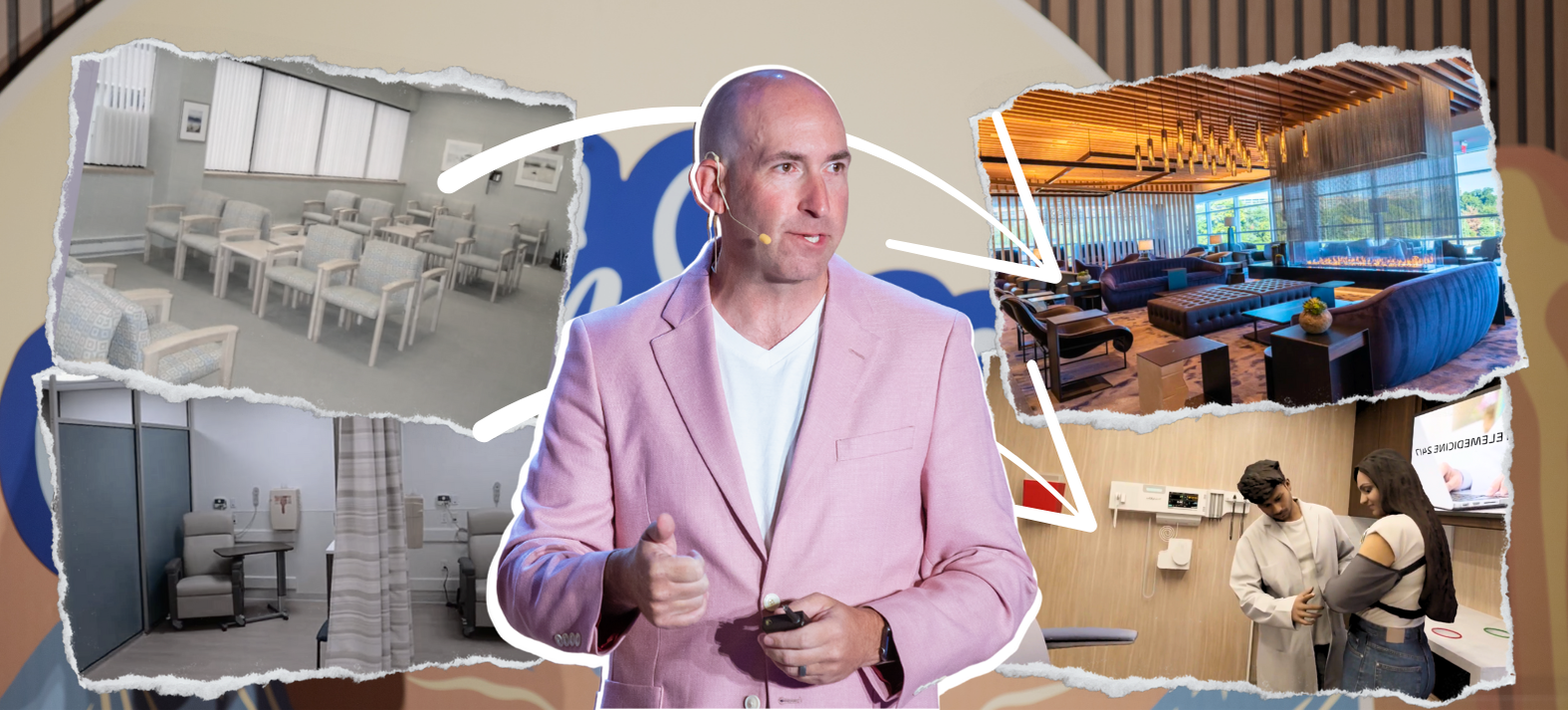EJ Kritz has spent his career designing the customer journey. As Chief Experience Officer at DBSI, he’s helped banks, retailers, healthcare organizations, and other service brands rethink their physical spaces—blending environment, behavior, and technology to create experiences that feel intentional.
But a few years ago, his perspective became reality.
At HealthSpaces, EJ shared what it was like to navigate cancer as a young father—through the eyes of a patient, and with the insight of someone who’s spent years designing spaces for everyone else.
Expectations vs. Reality
“I had never been sick before,” EJ shared. “I’d never broken a bone. Never been admitted to a hospital. My only real experience with care was being there for the birth of my kids.”
So when he was diagnosed with stage 3 melanoma in his 30s, his perception of the patient journey was shaped by media, assumptions, and his desire to create frictionless customer experiences.
Instead, what stood out wasn’t the care itself—but the spaces that surrounded it.
His PET scan wasn’t at the hospital’s main campus. It was at a satellite facility, in a neighborhood that felt unfamiliar and unsafe. “We pulled up and said, there’s a 0% chance you're walking around here alone,” he recalled telling his wife. “I stopped thinking about my scan and started worrying about her.”
Inside, the waiting room felt cold and clinical. The changing space reminded him of a retail fitting room. “This was a top-ranked hospital,” he said. “But I’ve seen DMV waiting areas that were more comfortable than where my wife had to spend hours.”
While the medical care was excellent, the space was shaping his emotional state long before he ever saw a doctor.
A Space That Doesn’t Fit the Moment
EJ spoke candidly about the moments in his journey where design—or the lack of it—made a hard situation harder.
“Not once did I feel like I could bring my kids to a treatment day,” he shared. Their pediatrician had recommended involving them, to help ease confusion and fear. But it never felt like an option.
“They were already scared. And if they had seen where I was going… they would have thought I was dying.”
This wasn’t about luxury or even aesthetics—it was about what the space communicated. And often, that message didn’t match the gravity of the moment.
The Patient Journey is a Human Journey
In industries like retail and travel, every element of the environment—lighting, layout, signage, even scent—is deliberately designed to create ease and connection. While healthcare has a very different mission, those same details still shape how patients feel about the care they receive.
EJ reminded the audience that patients don’t stop being consumers the moment they enter a clinic or hospital.
“They’re not comparing you to another hospital,” he said. “They’re comparing you to Starbucks. To Delta. To wherever they just were.”
Solutions like DBSI’s JunXion Micro-Clinic show how thoughtful, flexible environments can expand access, improve efficiency, and create spaces that deliver real value to healthcare providers.
He wasn’t suggesting healthcare compete with luxury brands—but that people bring expectations shaped by everyday experiences. And in vulnerable moments, even small design decisions can have a big impact to the patient experience.
What the Industry Rarely Gets to Hear
EJ offers a rare, first-hand look at the role space plays in patient care. One that many in healthcare don’t often hear… because to have that perspective, you have to go through it.
For him, this wasn’t theoretical. “If cancer’s not on my calendar, I don’t have it,” he told himself during treatment—trying to maintain some sense of normalcy, while taking meetings from infusion rooms that didn’t feel built for life outside of being sick.
A Takeaway That Stuck
What healthcare leaders took from EJ’s talk was a reminder: the environment matters. Because in between the scans and the surgeries, there’s a human trying to hold it all together.
As he put it: “Create a space where I can live—even if I’m in the process of dying.”
That kind of space? It can’t always be built from the ground up.
But it can be shaped—through intention, empathy, and a fresh perspective on what patient care really means.
Watch his full talk below...

Posted by
Collaborate with your Peers!
HealthSpaces is a community for people that plan, design, build and operate spaces where healthcare is delivered.
June 7-9, 2026 | Braselton, GA
Learn More




-4.png)
-Dec-09-2025-05-48-44-4379-PM.png)
-4.png)
-1.png)
-2.png)

Comments